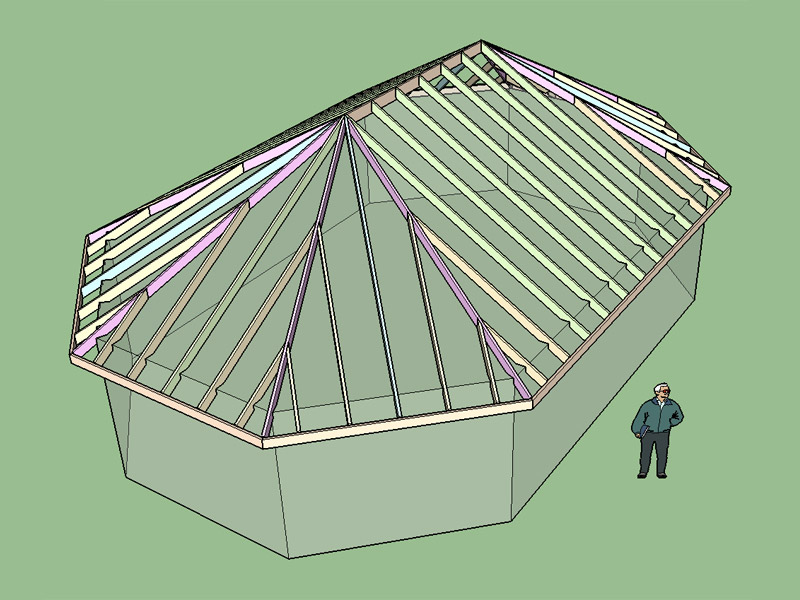
- Welcome to Medeek Forum.
This section allows you to view all posts made by this member. Note that you can only see posts made in areas you currently have access to.
#2701
Medeek Truss Plugin / Re: Development and Updates for the Medeek Truss Plugin
March 07, 2016, 02:43:02 AM
#2702
Medeek Truss Plugin / Re: Development and Updates for the Medeek Truss Plugin
March 07, 2016, 02:02:07 AM
Here is one way to frame an octagonal roof. The basic hip elements were first created with the plugin. This is a study of this type of roof to see what is required to add it into the plugin:
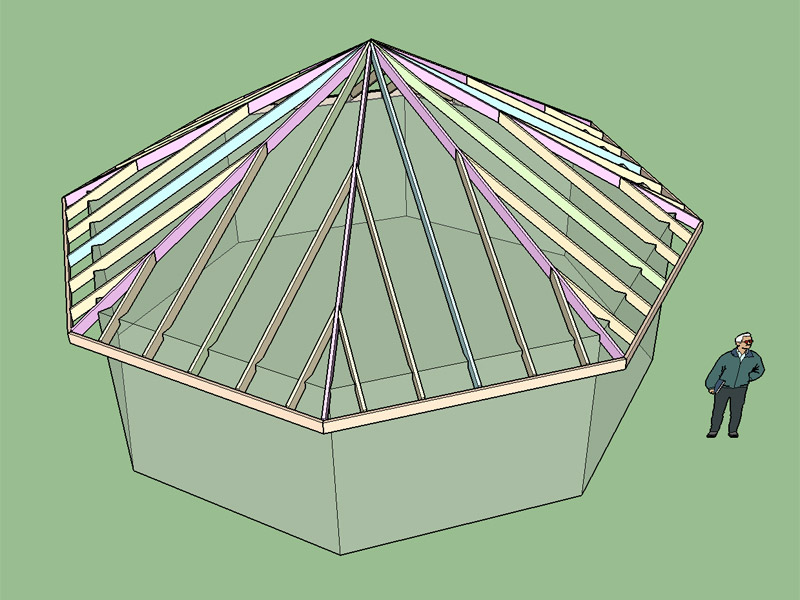
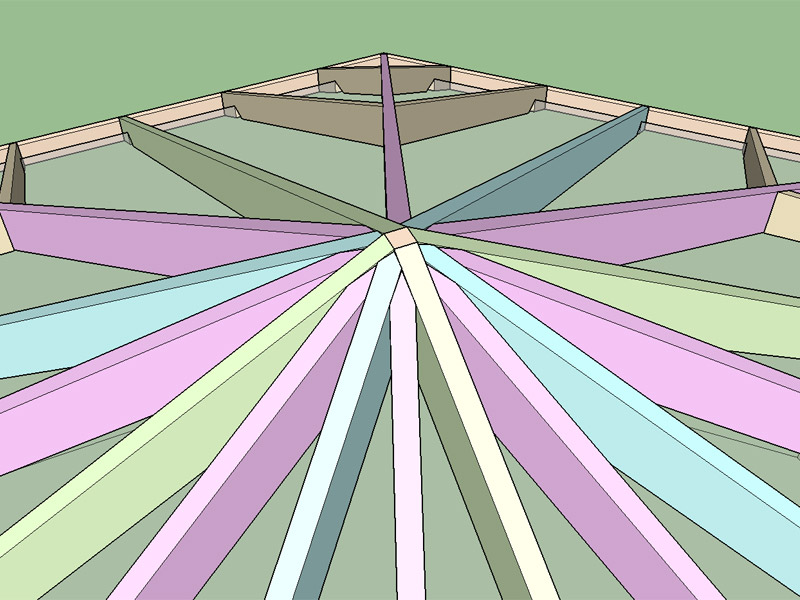
View model here:
https://3dwarehouse.sketchup.com/model.html?id=u27fa9eb4-683a-4d0e-b77c-17427a401b6b
Another method would be to use an 8 faceted center block. Dewalt's framing book goes into some alternative methods in some detail. I prefer the method I have shown above because it is much easier to extrapolate the framing method to include elongated octagonal roofs. 8 common rafters and 8 hip rafters come together at the peak, seems like it would be a real pain to try and fasten these at the peak, perhaps someone could enlighten me on how a carpenter would actually put this together.


View model here:
https://3dwarehouse.sketchup.com/model.html?id=u27fa9eb4-683a-4d0e-b77c-17427a401b6b
Another method would be to use an 8 faceted center block. Dewalt's framing book goes into some alternative methods in some detail. I prefer the method I have shown above because it is much easier to extrapolate the framing method to include elongated octagonal roofs. 8 common rafters and 8 hip rafters come together at the peak, seems like it would be a real pain to try and fasten these at the peak, perhaps someone could enlighten me on how a carpenter would actually put this together.
#2703
Medeek Truss Plugin / Re: Development and Updates for the Medeek Truss Plugin
March 06, 2016, 11:34:34 PMVersion 1.3.7 - 03.06.2016
- Added Soffit Cut within Advanced Options for common fink truss type.
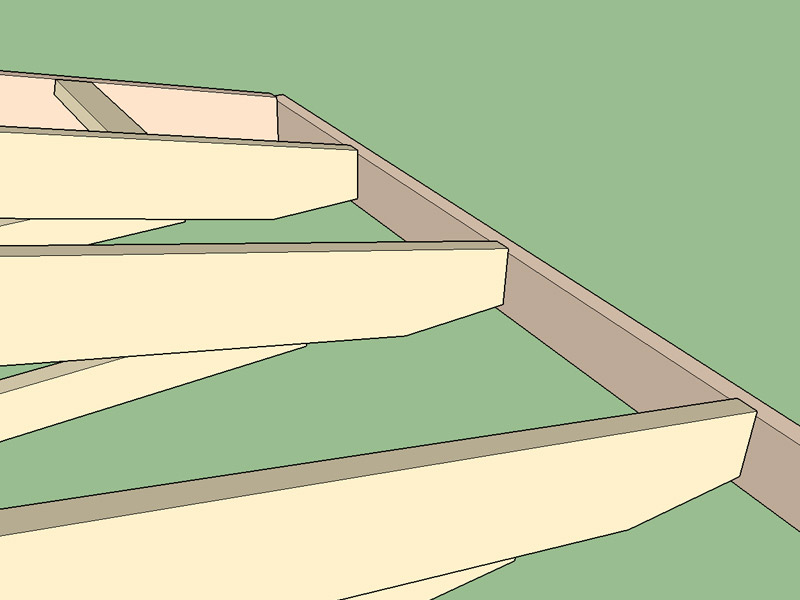
After I'm certain that this feature is robust I will add it to all other truss types and rafter roofs. For now it only applies to roofs that use a common fink truss (non-raised heel).
#2704
Medeek Truss Plugin / Re: Development and Updates for the Medeek Truss Plugin
March 06, 2016, 01:45:23 PM
Nine different truss profiles currently available within the Medeek Truss Plugin:
- Common
- Attic
- Monopitch
- Scissor
- Tail Bearing
- Dual Pitch
- Bowstring
- Bow Barrel
- Floor (System 42)
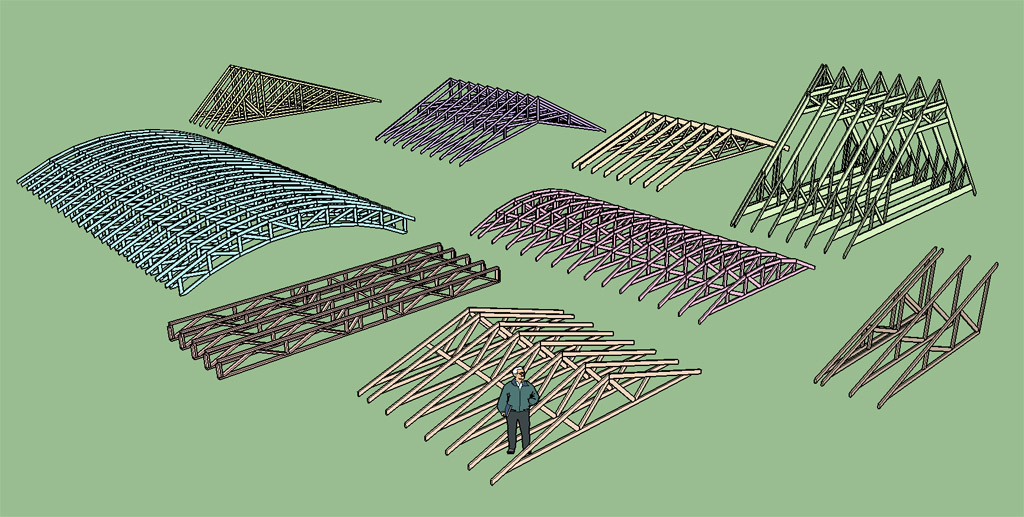
View model here:
https://3dwarehouse.sketchup.com/model.html?id=ue9b30427-93a7-45c9-abdd-e35b18cac1de
Are there any truss types I am missing that you would like to see added to the plugin?
- Common
- Attic
- Monopitch
- Scissor
- Tail Bearing
- Dual Pitch
- Bowstring
- Bow Barrel
- Floor (System 42)

View model here:
https://3dwarehouse.sketchup.com/model.html?id=ue9b30427-93a7-45c9-abdd-e35b18cac1de
Are there any truss types I am missing that you would like to see added to the plugin?
#2705
Medeek Truss Plugin / Re: Development and Updates for the Medeek Truss Plugin
March 06, 2016, 05:05:16 AM
Version 1.3.6 - 03.06.2016
- Added Double Howe and Triple Howe common truss types.
- Structural outlookers (vert. & horz.) enabled under advanced roof options for Common (Double & Triple Howe) truss types.
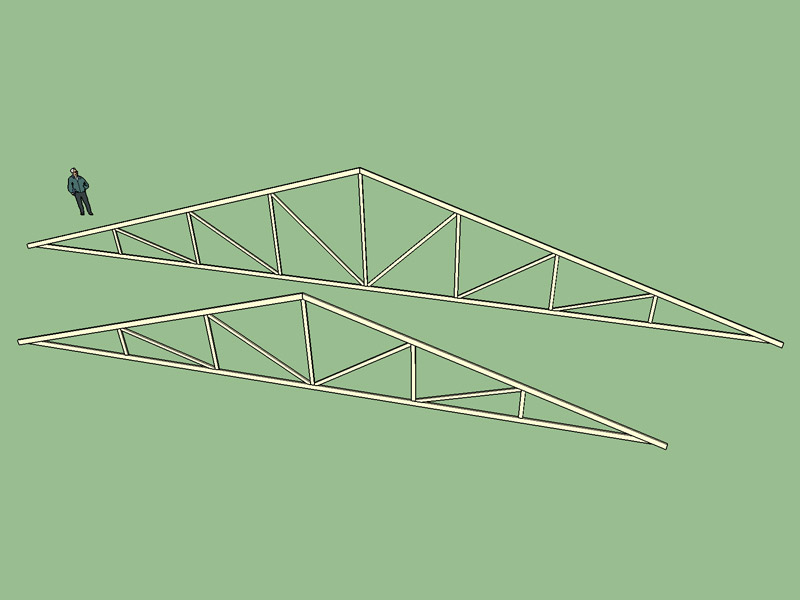
View model here:
https://3dwarehouse.sketchup.com/model.html?id=u456fbc36-6d2e-43ed-af05-5f9ad26f89b4
- Added Double Howe and Triple Howe common truss types.
- Structural outlookers (vert. & horz.) enabled under advanced roof options for Common (Double & Triple Howe) truss types.

View model here:
https://3dwarehouse.sketchup.com/model.html?id=u456fbc36-6d2e-43ed-af05-5f9ad26f89b4
#2706
Medeek Truss Plugin / Re: Development and Updates for the Medeek Truss Plugin
March 06, 2016, 12:41:03 AM
I'm thinking the next thing I might tackle is an octagonal rafter roof. Something along these lines:
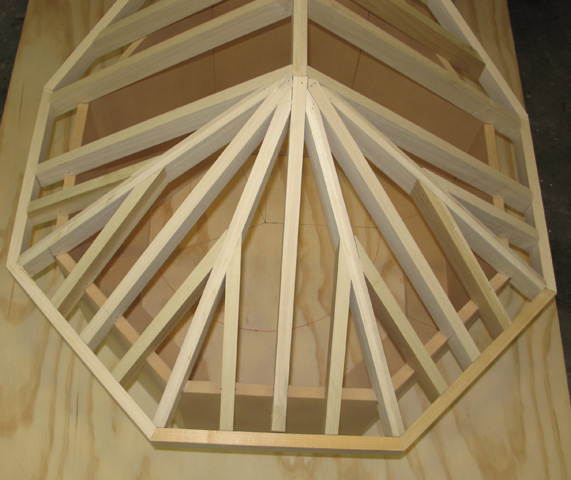
My time allotted to work on the plugin is very limited right now so I'm trying to decide if this would be something of interest for current and potential users of the plugin.

My time allotted to work on the plugin is very limited right now so I'm trying to decide if this would be something of interest for current and potential users of the plugin.
#2707
Medeek Truss Plugin / Re: Development and Updates for the Medeek Truss Plugin
March 05, 2016, 02:19:48 AM
I find the bow barrel truss very interesting. Its very similar to a flat truss in a lot of respects but then you essentially create pitch breaks at all the panel points and add some camber to it.

View model here:
https://3dwarehouse.sketchup.com/model.html?id=uf39ab29a-4d1b-458f-b9cb-b1bf882b9774

View model here:
https://3dwarehouse.sketchup.com/model.html?id=uf39ab29a-4d1b-458f-b9cb-b1bf882b9774
#2708
Medeek Truss Plugin / Re: Development and Updates for the Medeek Truss Plugin
March 04, 2016, 08:26:11 PM
Version 1.3.5 - 03.04.2016
- Added Bow Barrel truss type, configurations: (8/8).
- Metric input enabled for bow barrel truss type.
- Corrected a bug with the webs of the bowstring truss type.
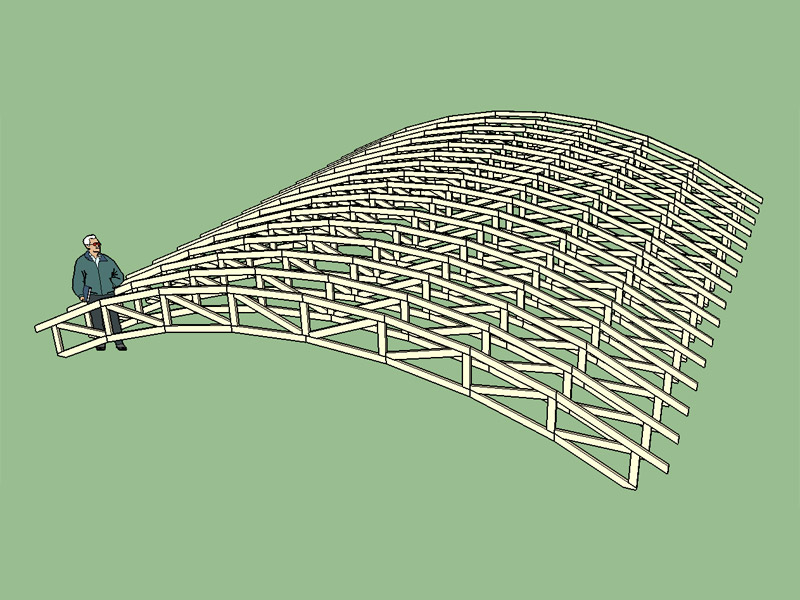
View model here:
https://3dwarehouse.sketchup.com/model.html?id=u754b5fc3-c3ea-48cb-9f13-24c92ae39d97
Gable end option is also available (not shown in image above for clarity) for this truss type.
- Added Bow Barrel truss type, configurations: (8/8).
- Metric input enabled for bow barrel truss type.
- Corrected a bug with the webs of the bowstring truss type.

View model here:
https://3dwarehouse.sketchup.com/model.html?id=u754b5fc3-c3ea-48cb-9f13-24c92ae39d97
Gable end option is also available (not shown in image above for clarity) for this truss type.
#2709
Medeek Truss Plugin / Re: Development and Updates for the Medeek Truss Plugin
March 02, 2016, 06:43:20 PM
Version 1.3.4 - 03.02.2016
- Corrected a bug in the metric unit template module.
- Corrected a bug in the metric unit template module.
#2710
Medeek Truss Plugin / Re: Development and Updates for the Medeek Truss Plugin
February 29, 2016, 12:37:03 AM28' Bow Barrel Truss (8/8) study.
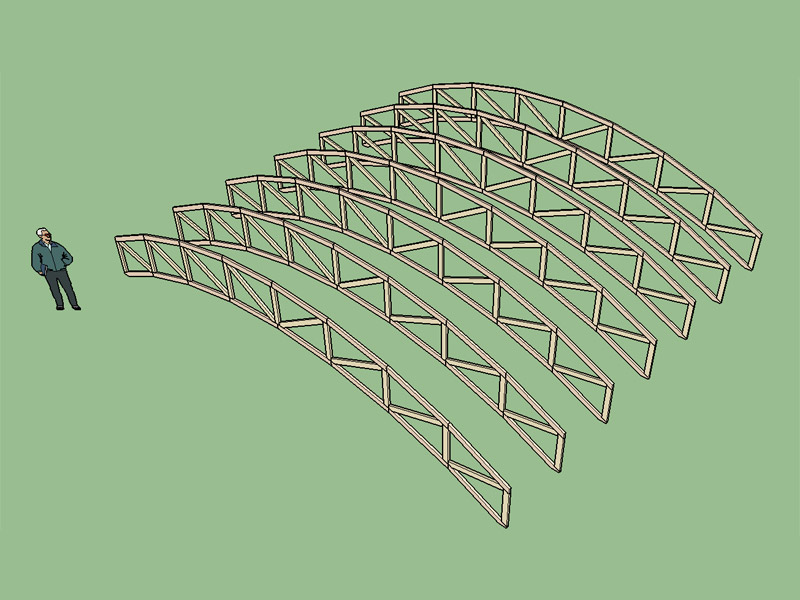
View model here:
https://3dwarehouse.sketchup.com/model.html?id=ub4c69c4f-ae02-4ad8-b17b-5eecb8d31823
Gable end trusses for this type are a bit of a question right now. I can add this one into the plugin if there is some call for it, but I may hold off until a request is made since the code will be somewhat tedious with all the separate members that make up the top and bottom chords.
#2711
Medeek Truss Plugin / Re: Development and Updates for the Medeek Truss Plugin
February 28, 2016, 02:51:33 PM
Added Bowstring truss type, configurations: (8/8).
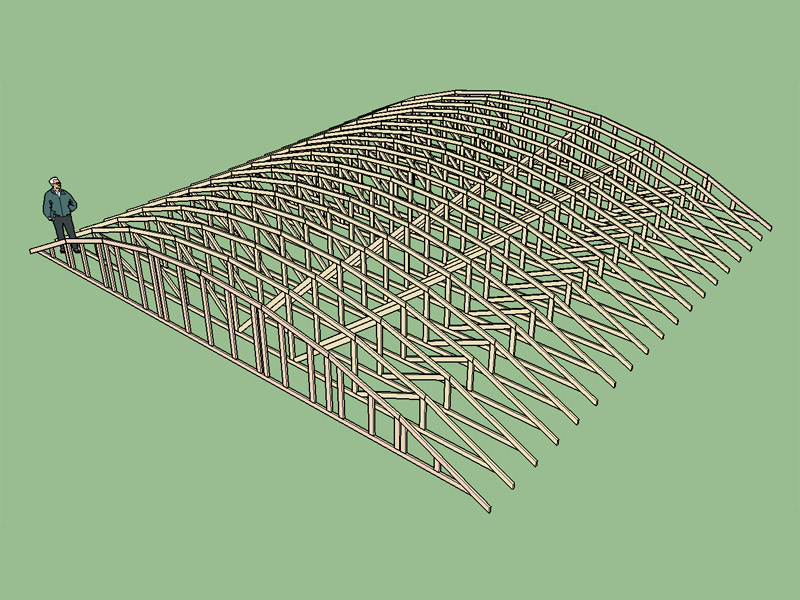
View model here:
https://3dwarehouse.sketchup.com/model.html?id=uad891cf8-30ad-4d6f-ae10-a8b7f10a2114
Initially I wasn't really sure how to lay out this type of truss, especially the webs and panel distances. Then after some thought it occurred to me that the length of each top chord segment should be roughly equal to best approximate the circular shape of the truss. After some checking of existing shop drawings my theory tested correct. The length of each top chord segment is equal in length.

View model here:
https://3dwarehouse.sketchup.com/model.html?id=uad891cf8-30ad-4d6f-ae10-a8b7f10a2114
Initially I wasn't really sure how to lay out this type of truss, especially the webs and panel distances. Then after some thought it occurred to me that the length of each top chord segment should be roughly equal to best approximate the circular shape of the truss. After some checking of existing shop drawings my theory tested correct. The length of each top chord segment is equal in length.
#2712
Medeek Truss Plugin / Re: Development and Updates for the Medeek Truss Plugin
February 28, 2016, 12:59:22 AM
Version 1.3.3 - 02.28.2016
- Added Bowstring truss type, configurations: (6/6).
- Metric input enabled for bowstring truss type.
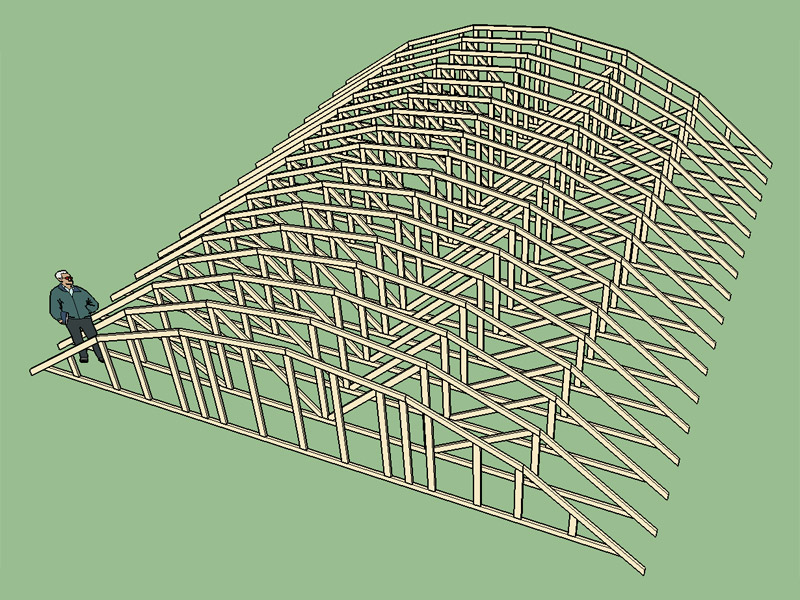
View model here:
https://3dwarehouse.sketchup.com/model.html?id=udee2767c-3da1-40b9-8d07-9e1e36989d4a
I'm not sure how common place this truss type is anymore so I will add the advanced options at a later date if requested by a user. I can also add in other configurations with more panels if needed (ie. 8/8, 10/10).
- Added Bowstring truss type, configurations: (6/6).
- Metric input enabled for bowstring truss type.

View model here:
https://3dwarehouse.sketchup.com/model.html?id=udee2767c-3da1-40b9-8d07-9e1e36989d4a
I'm not sure how common place this truss type is anymore so I will add the advanced options at a later date if requested by a user. I can also add in other configurations with more panels if needed (ie. 8/8, 10/10).
#2713
Medeek Truss Plugin / Re: Development and Updates for the Medeek Truss Plugin
February 25, 2016, 10:16:18 AM
A quick study of the general shape and layout of a 6/6 bowstring truss with different radii:
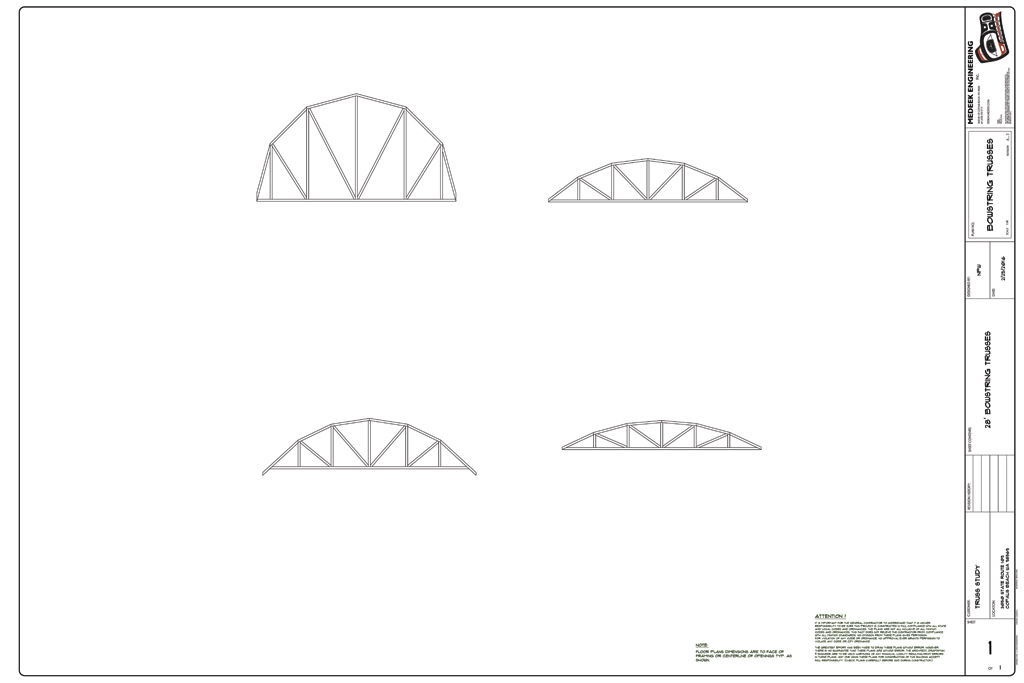

#2714
Medeek Truss Plugin / Re: Development and Updates for the Medeek Truss Plugin
February 24, 2016, 09:45:55 PM
Mono Cathedral trusses with heel wedge:
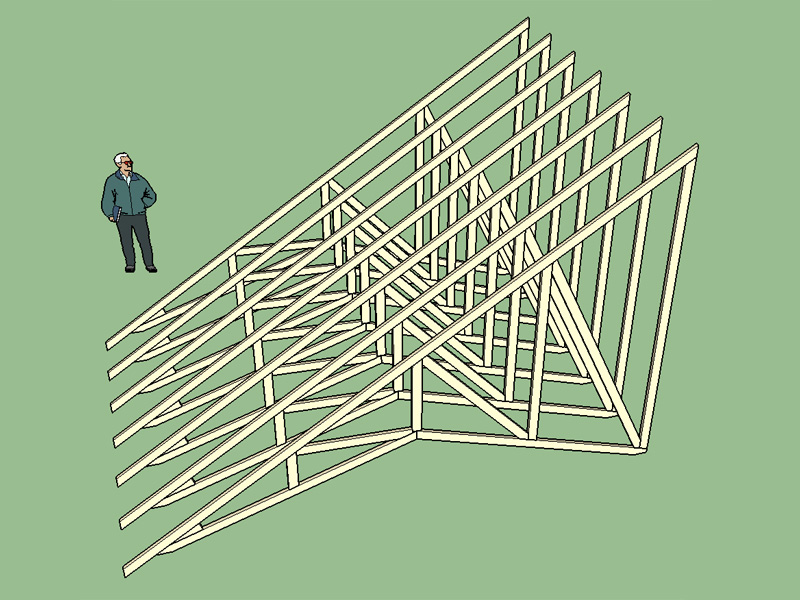
View model here:
https://3dwarehouse.sketchup.com/model.html?id=u5c030ac2-f2e4-4c8d-8d9b-67bfa780ee7f

View model here:
https://3dwarehouse.sketchup.com/model.html?id=u5c030ac2-f2e4-4c8d-8d9b-67bfa780ee7f
#2715
Medeek Truss Plugin / Re: Development and Updates for the Medeek Truss Plugin
February 23, 2016, 04:03:46 AM
Version 1.3.2 - 02.23.2016
- Added Dualpitch truss type, configurations: (2/2-3/3).
- Metric input enabled for dualpitch truss type.
- Advanced options enabled for dualpitch truss type.
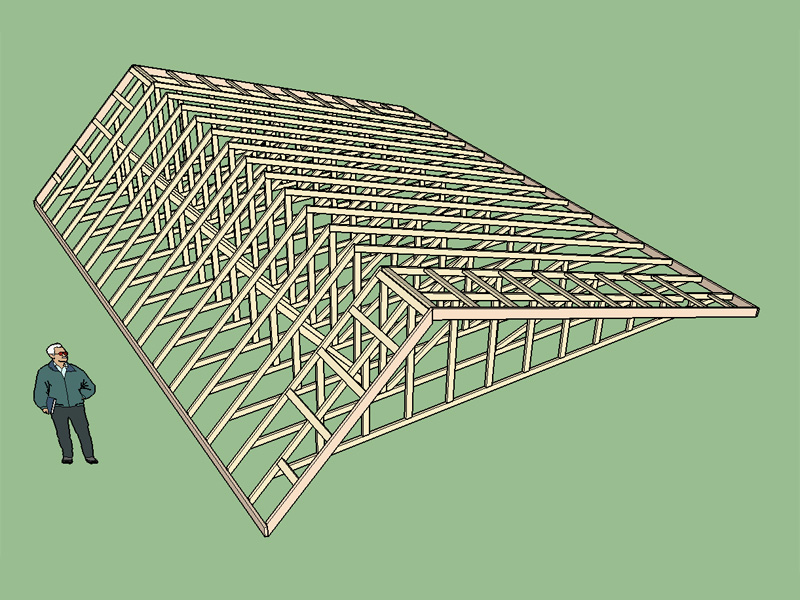
View model here:
https://3dwarehouse.sketchup.com/model.html?id=u9b6a5e53-76c4-4c9b-bce3-aaa8ffba4c36
- Added Dualpitch truss type, configurations: (2/2-3/3).
- Metric input enabled for dualpitch truss type.
- Advanced options enabled for dualpitch truss type.

View model here:
https://3dwarehouse.sketchup.com/model.html?id=u9b6a5e53-76c4-4c9b-bce3-aaa8ffba4c36
